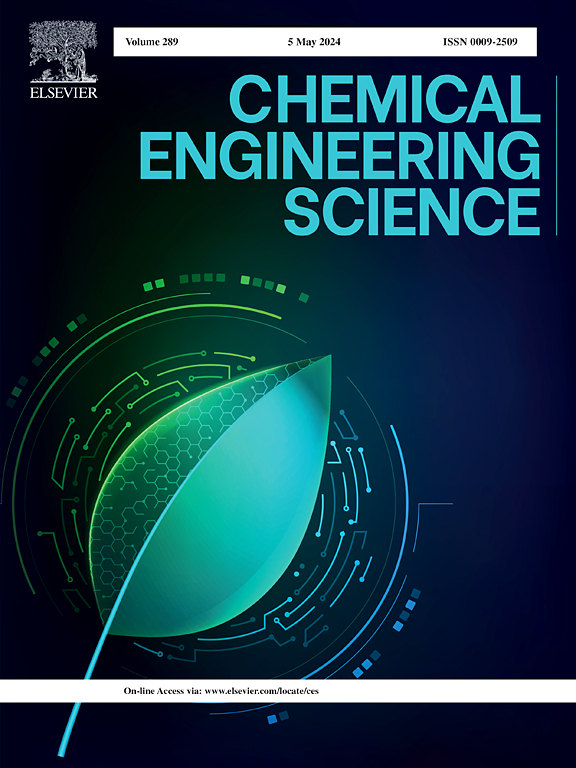垂直管道注入乙二醇对水合物堵塞的去除效果研究
IF 4.1
2区 工程技术
Q2 ENGINEERING, CHEMICAL
引用次数: 0
摘要
水合物堵塞威胁着深海管道的安全运输。受流动回路规模的限制,产生足够的水合物堵塞以进行实验室去除研究是具有挑战性的。本研究提出了一种通过高压过滤将水合物晶体从残余气液混合物中分离出来制备固体水合物堵块的新方法。系统考察了乙二醇(EG)浓度、温度、体积和浸泡时间对水合物分解的影响。结果表明,当EG浓度从5 wt%增加到50 wt%时,分解效率提高了415 %,但浓度越高,分解效率越低。将温度从30 °C提高到80 °C,气体分解率提高182 %,热效率峰值为50 °C。将注射量从50毫升增加到170毫升,可使解离率提高406 %。注入EG溶液导致水合物塞分解,导致管道压力增加,最大增加1.14 MPa。浸泡时间与EG浓度呈正相关,但浸泡时间越长,平均分解速度越慢。这些解离特性对石油和天然气的流动保障至关重要。本文章由计算机程序翻译,如有差异,请以英文原文为准。
Study on the removal efficiency of hydrate blockage by injection ethylene glycol in vertical pipeline
Hydrate blockages threaten the safe transportation of deep-sea pipelines. Limited by flow loop scale, generating sufficient hydrate blockages for removal studies in lab is challenging. This study proposed a novel method to prepare solid hydrate blockages by separating hydrate crystals from residual gas–liquid mixtures via high-pressure filtration. The effects of ethylene glycol (EG) concentration, temperature, volume, and soak time on hydrate decomposition were systematically examined. Results show that increasing EG concentration from 5 wt% to 50 wt% enhances decomposition by 415 %, though EG efficiency declines at higher concentrations. Raising the temperature from 30 °C to 80 °C increases gas decomposition by 182 %, with peak thermal efficiency at 50 °C. Increasing injection volume from 50 mL to 170 mL boosts dissociation by 406 %. Injecting EG solution causes the decomposition of hydrate plugs, resulting in the increase of pressure in the pipeline, with a maximum increase of 1.31 MPa. Soak time correlates positively with EG concentration, but longer soak time reduce the average decomposition rate. These dissociation characteristics are crucial for the flow assurance of oil and natural gas.
求助全文
通过发布文献求助,成功后即可免费获取论文全文。
去求助
来源期刊

Chemical Engineering Science
工程技术-工程:化工
CiteScore
7.50
自引率
8.50%
发文量
1025
审稿时长
50 days
期刊介绍:
Chemical engineering enables the transformation of natural resources and energy into useful products for society. It draws on and applies natural sciences, mathematics and economics, and has developed fundamental engineering science that underpins the discipline.
Chemical Engineering Science (CES) has been publishing papers on the fundamentals of chemical engineering since 1951. CES is the platform where the most significant advances in the discipline have ever since been published. Chemical Engineering Science has accompanied and sustained chemical engineering through its development into the vibrant and broad scientific discipline it is today.
 求助内容:
求助内容: 应助结果提醒方式:
应助结果提醒方式:


